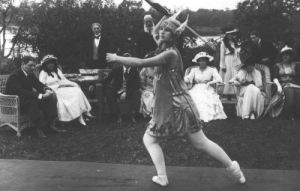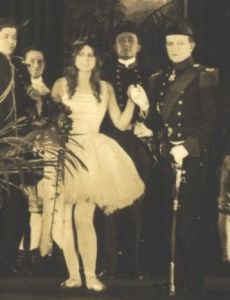February 20th and 21st there’s an online event which is rather like a Valentine’s Day celebration for collectors: The first annual Bookmark Collectors Virtual Convention.
This two-day event you can attend in your jammies sitting at your computer is obviously focused on the collecting of bookmarks, but the rest of us can learn something too.
As an ephemera collector struggling to organize my collection, I’m extremely eager to from Don Baldwin on Organizing a Bookmark Collection.
And, because old paper bits are one of my things, I’m looking forward to Lauren Roberts (founder of BiblioBuffet — which has a regular column on bookmarks) speaking about How To Store And Display Your Bookmark Collection.
And then there’s my presentation, Are You An Embarrassed Collector? Don’t Be!, which is for collectors everywhere, of anything — collectors of everything:
Maybe you’ve never articulated why you collect, what your collection “does” — or maybe you have & you just don’t think it’s important in The Big Picture sort of a way. Maybe others have made you feel like a capitalistic consumer pig in your collecting pursuits. Whatever the reason, do you down-play your “junk,” your hobby, and your passion?
It is my hope that in this session you will become a more confident collector, to learn to see your items beyond their materialistic cash value and appraise them for their cultural and intrinsic values, to see the very act of collecting itself and your contribution as a collector as significant. Because all collections, great and small — all collectors, great and small — are of incredible value.
It’s my belief that all collections and all collectors have value, even if the stuff isn’t “old enough” or “good enough” to seem of any value. I’d tell you more about this, but, frankly, you should come to the conference.
Registration is just$10 for all the sessions, forums, and trade show & gallery goodies.
I don’t make a dime off this event (again, my passion for collecting is worn on my sleeve), but I ‘d like a nice big group in my session. *wink*
 So, to entice you — be you a collector of bookmarks or not — with the help of the founder of Doodle Week, Inherited Values very own Laura Brown, I’m offering five Bookmark Collectors Virtual Conference Commemorative Collector Bookmarks for the first five folks (from the US or Canada) who mention “Inherited Values” in their registration for the event.
So, to entice you — be you a collector of bookmarks or not — with the help of the founder of Doodle Week, Inherited Values very own Laura Brown, I’m offering five Bookmark Collectors Virtual Conference Commemorative Collector Bookmarks for the first five folks (from the US or Canada) who mention “Inherited Values” in their registration for the event.
Only 12 of these commemorative bookmarks will be made (five to be given away here, five at the art site that’s home of Doodle Week, one for the artist, and, ever the collector, one for myself), so it’s truly a limited edition.
And pretty cute to-boot *wink*
I hope you’ll register for this event because you’re a collecting nut who is interested; but it never hurts to add a little incentive, right?
I hope to “see” you there!
Image Credits:
Photos (2) of bookmarks and bookmark storage both courtesy of bookmark collector Alan Irwin, the founder and host of the Bookmark Collectors Virtual Convention.
I’m Going To Need More Books doodle commemorating the bookmark convention by Laura Brown.

































































































